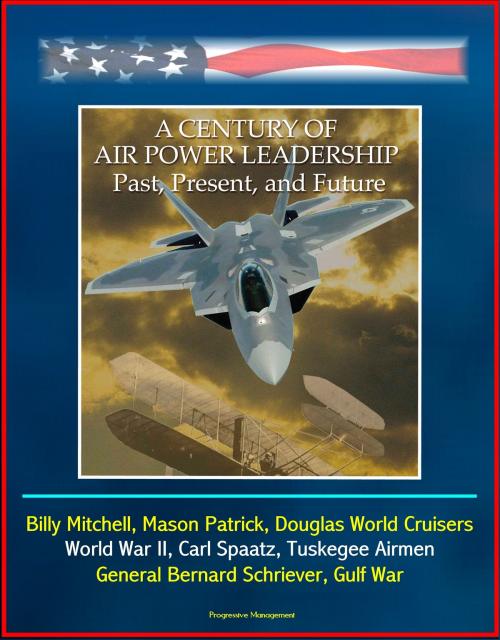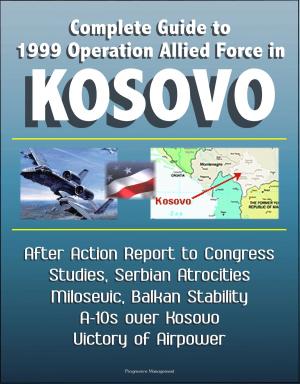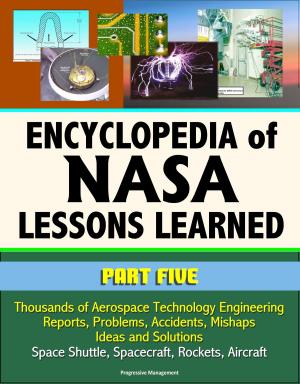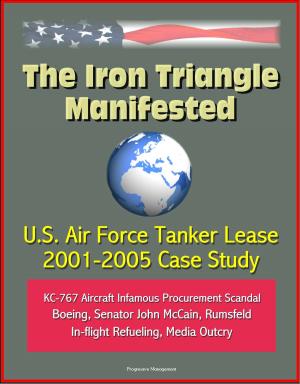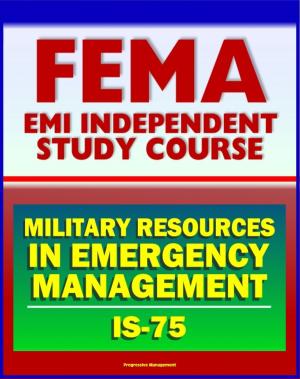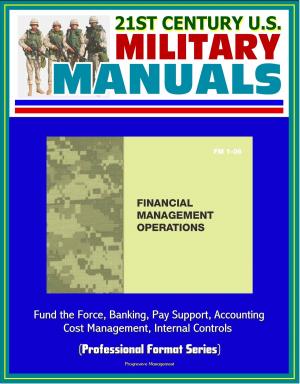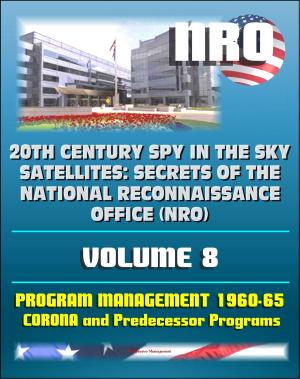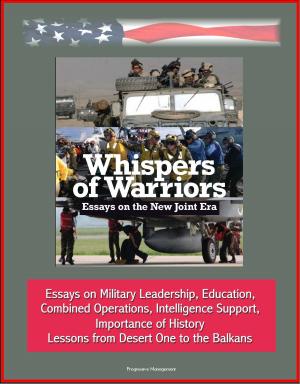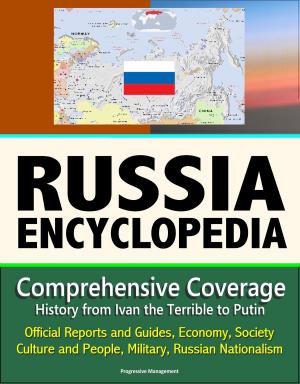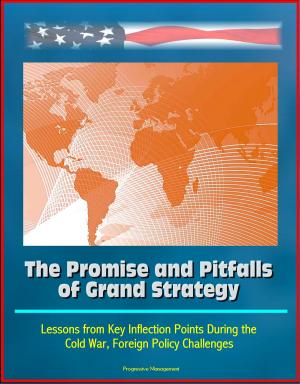A Century of Air Power Leadership: Past, Present, and Future - Billy Mitchell, Mason Patrick, Douglas World Cruisers, World War II, Carl Spaatz, Tuskegee Airmen, General Bernard Schriever, Gulf War
Nonfiction, History, Military, Aviation, World War II| Author: | Progressive Management | ISBN: | 9781311154750 |
| Publisher: | Progressive Management | Publication: | July 8, 2015 |
| Imprint: | Smashwords Edition | Language: | English |
| Author: | Progressive Management |
| ISBN: | 9781311154750 |
| Publisher: | Progressive Management |
| Publication: | July 8, 2015 |
| Imprint: | Smashwords Edition |
| Language: | English |
Professionally converted for accurate flowing-text e-book format reproduction, this unique USAF publication documents a symposium by the George Bush School of Government and Public Service and the Air Force History and Museums Program, which explored aspects of military leadership over the past 100 years, highlighting factors that encouraged success or inhibited innovation. Among the crucial issues discussed were problems in doctrinal, technological, and weapons innovation and differences among air power leaders. Although focusing on the past, the symposium proceeded from the proposition that air and space power leadership had revolutionary effects on strategy and security. This book is intended to help readers who are interested in the impact of leadership on military affairs. As the symposium and the book make abundantly clear, the role of the individual in the saga of air power has far outweighed any other single factor, including technology.
The symposium featured presentations by distinguished airmen, scholars, and public figures. All shared their knowledge and insights on key events, issues, and lessons before a diverse audience. Former President George H. W. Bush, Dr. James G. Roche, Secretary of the Air Force, and Gen. John P. Jumper, Air Force Chief of Staff, were keynote speakers. Few American leaders can match President George H. W. Bush in dealing with the transformation of American air power. Before a crowd of 400 attendees, he spoke of what his World War II combat experiences meant to him and candidly assessed the leadership challenges ahead. Secretary Roche and General Jumper discussed the implications of air and space power for America's national security and, in tackling tough, politically charged issues, demonstrated those qualities of leadership we most admire. Taken together, the essays in this book constitute an introduction to the history of air and space power leadership, beginning with an exploration of the significance of Billy Mitchell. A session chaired by Dr. Roger G. Miller addressed issues that arose from Mitchell's quest for air independence, and the roles played by his contemporaries—Mason M. Patrick and Benjamin D. Foulois. Dr. James J. Cooke, Dr. Robert P. White, and Maj. John Beaulieu provided texture and context for the Mitchell legend with new and dynamic historical interpretations.
Panel I * Billy Mitchell, Mason Patrick et al * Dr. Roger G. Miller, Chair * Billy Mitchell: Air War Fighter * Dr. James J. Cooke * Mason Patrick: A Foundation of Air Force Independence * Dr. Robert P. White * The Douglas World Cruisers, 1924 * Maj. John Beaulieu, USAF * Panel II * The Second World War * Gen. Carl A. Spaatz: A 21st Century Air Leadership Model * Dr. David R. Mets * Robert A. Lovett: The AAF's World War II Civilian Advocate * Dr. George M. Watson, Jr. * Tuskegee Airmen: How the Red Tails Did It * Lt. Gen. Daniel James III, USAF * Q&A * Kenney and Arnold: Leadership and Tension in the Southwest Pacific * Herman S. Wolk * Q&A * The Power of Personality: Interpersonal Conflict Among Air Power Leaders * Dr. Roger Beaumont * Q&A * Keynote Address * Introduction * Dr. Arnold Vedlitz * General John P. Jumper * Q&A . * Life, Flight, and Art * Keith Ferris * Gen. Bernard A. Schriever: A Tribute * Jacob Neufeld * Panel III * Aggie Aviation: Leadership in Action * Penrod S. Thornton, Chair * Gen. Patrick K. Gamble, USAF (Ret) * Lt. Gen. Randolph House, USA (Ret.) * Maj. Gen. Jay D. Blume, Jr., USAF (Ret.) * Q&A * Geopolitics and Astropolitik: A Framework for Outer Space Strategy * Dr. Everett Carl Dolman * Panel IV * Air Power: Gulf War I to Gulf War II * Dr. Wayne Thompson, Chair * Mount Pinatubo * C. R. Anderegg * Khobar Towers: The Medical Response
Professionally converted for accurate flowing-text e-book format reproduction, this unique USAF publication documents a symposium by the George Bush School of Government and Public Service and the Air Force History and Museums Program, which explored aspects of military leadership over the past 100 years, highlighting factors that encouraged success or inhibited innovation. Among the crucial issues discussed were problems in doctrinal, technological, and weapons innovation and differences among air power leaders. Although focusing on the past, the symposium proceeded from the proposition that air and space power leadership had revolutionary effects on strategy and security. This book is intended to help readers who are interested in the impact of leadership on military affairs. As the symposium and the book make abundantly clear, the role of the individual in the saga of air power has far outweighed any other single factor, including technology.
The symposium featured presentations by distinguished airmen, scholars, and public figures. All shared their knowledge and insights on key events, issues, and lessons before a diverse audience. Former President George H. W. Bush, Dr. James G. Roche, Secretary of the Air Force, and Gen. John P. Jumper, Air Force Chief of Staff, were keynote speakers. Few American leaders can match President George H. W. Bush in dealing with the transformation of American air power. Before a crowd of 400 attendees, he spoke of what his World War II combat experiences meant to him and candidly assessed the leadership challenges ahead. Secretary Roche and General Jumper discussed the implications of air and space power for America's national security and, in tackling tough, politically charged issues, demonstrated those qualities of leadership we most admire. Taken together, the essays in this book constitute an introduction to the history of air and space power leadership, beginning with an exploration of the significance of Billy Mitchell. A session chaired by Dr. Roger G. Miller addressed issues that arose from Mitchell's quest for air independence, and the roles played by his contemporaries—Mason M. Patrick and Benjamin D. Foulois. Dr. James J. Cooke, Dr. Robert P. White, and Maj. John Beaulieu provided texture and context for the Mitchell legend with new and dynamic historical interpretations.
Panel I * Billy Mitchell, Mason Patrick et al * Dr. Roger G. Miller, Chair * Billy Mitchell: Air War Fighter * Dr. James J. Cooke * Mason Patrick: A Foundation of Air Force Independence * Dr. Robert P. White * The Douglas World Cruisers, 1924 * Maj. John Beaulieu, USAF * Panel II * The Second World War * Gen. Carl A. Spaatz: A 21st Century Air Leadership Model * Dr. David R. Mets * Robert A. Lovett: The AAF's World War II Civilian Advocate * Dr. George M. Watson, Jr. * Tuskegee Airmen: How the Red Tails Did It * Lt. Gen. Daniel James III, USAF * Q&A * Kenney and Arnold: Leadership and Tension in the Southwest Pacific * Herman S. Wolk * Q&A * The Power of Personality: Interpersonal Conflict Among Air Power Leaders * Dr. Roger Beaumont * Q&A * Keynote Address * Introduction * Dr. Arnold Vedlitz * General John P. Jumper * Q&A . * Life, Flight, and Art * Keith Ferris * Gen. Bernard A. Schriever: A Tribute * Jacob Neufeld * Panel III * Aggie Aviation: Leadership in Action * Penrod S. Thornton, Chair * Gen. Patrick K. Gamble, USAF (Ret) * Lt. Gen. Randolph House, USA (Ret.) * Maj. Gen. Jay D. Blume, Jr., USAF (Ret.) * Q&A * Geopolitics and Astropolitik: A Framework for Outer Space Strategy * Dr. Everett Carl Dolman * Panel IV * Air Power: Gulf War I to Gulf War II * Dr. Wayne Thompson, Chair * Mount Pinatubo * C. R. Anderegg * Khobar Towers: The Medical Response
